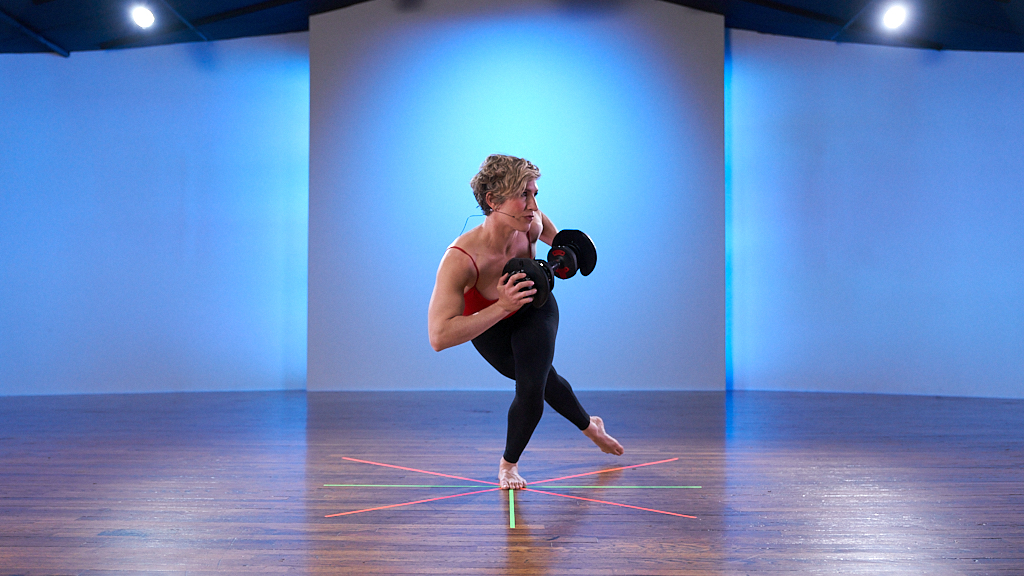If you had to break techniques down into a few steps, what would they be? Chances are, you might include the basics like tendues or pliés, then you might think of leg extensions, turns, and jumps.
Dance is, of course, about so much more than leaps and pirouettes, but there is a reason that we practice them in so many technique classes. The classic pirouette is a base for an infinite number of variations that involve turning your body around an axis. Since the strength needed to accomplish many rotations in a pirouette comes mainly from your core, dancers who can turn well develop the ability to quickly transfer weight, balance well, and even jump and land with more stability than dancers who do not practice pirouettes.
If you are looking to improve your pirouettes, then working on core strengthening exercises is the best place to start!
Equipment Needed
- Yoga mat
- Exercise Ball
- Hand-Held Weights
Exercise 1: Diaphragmatic Breathing


The purpose of this is to strengthen the intercostal muscles, which are the deep core muscles that get activated in your turns. They help to keep you balanced and on top of your supporting leg while turning.
- Exercise: Lay on your back with your knees bent and place an exercise ball on top of your thighs. With the ball in place, bring your legs and arms up into a dead bug position, squeezing the ball between your limbs. Bend your knees slightly past 90 degrees and keep them slightly turned out. Keep your mouth closed, and take deep belly breaths. Add some motion by doing dead bugs, extending your right arm and left leg out together, then returning to the starting position and alternating sides. 5-10 reps per side, 2-3 sets.
Exercise 2: Core Rolls

The purpose of this exercise is to create stability throughout the body, working on finding a connection between the pelvis and the spine. When your body is in proper alignment, you are more stable, and you can get more rotations on your turns.
- Exercise: Start in the same position as exercise 1. Keeping your body and the ball stable, start to roll slightly to the right lifting your left shoulder and hip in unison. Roll as far as you can without compromising your body position. Repeat to the left. 3-5x per side, 2-3 sets. You don’t need to go too far to feel it working!
Exercise 3: Stability Ball Plank with Alternating Mountain climber

This exercise is geared towards activating your obliques. Your obliques are the side lines of your abdominal muscles that help support your balance as you turn. They are especially useful in turns where your leg is not attached to your body.
- Exercise: Start in a plank position with your palms on the ground underneath your shoulders, but elevate your shins by placing them on your stability ball. Release your right leg from the ball, and drive your right knee in towards the right elbow. Pause there for a few seconds, then bring your leg back to the starting position. Repeat but bring your right knee in towards the left elbow, then switch knees and repeat the exercise. 5-10 reps per side, 2-3 sets focusing on pushing the supporting shin into the ball to stabilize the body.
Exercise 4: Single Leg Balance with Alternating Posterior Diagonal Reach

You want to make sure you can engage your core muscles as you are lengthening. This exercise is great for dancers who lengthen their arms away from their center of gravity while turning.
- Exercise: Grab a hand-held weight and hold it horizontally in both hands. Standing on one leg, keep your torso and hips square while reaching your arms behind you on a diagonal as far as you can without compromising balance or posture. You should feel your core engaging the more you lengthen your arms away from your body. Alternate sides for about 10 reps. Repeat standing on the opposite leg.
Exercise 5: Pivot Lunges



This exercise is a great way to help you find your balance and practice getting “on your leg.” Finding stability amid quick weight transfers is a huge plus for dancers looking to improve their turns.
- Exercise: Stand tall with your hips square and your feet shoulder-width apart. Lunge backward with your right leg, keeping your front knee over the ankle and your back knee under the hip. With a quick tight motion that mirrors what you might do to turn, bring your right foot to passé, engage the core, and hold. Then step the right foot forward and lunge, and practice transferring the weight back as you pull up into the passé position. Repeat on the left. You can progress this exercise by repeating on a lateral plane, reaching the right foot back into a curtsey lunge and pulling up to passé, then stepping the right leg out to a lateral or side lunge and pulling back to passé. Repeat 5-8x times per side.
Achieving More Rotations in Your Turns
Core stability is a fundamental aspect of your turns due to the physics involved. It’s easiest to see in figure skating or ballet partnering how much faster and stronger ballet dancers or figure skaters can turn if they have a strong center!
However, a strong core is not the only part of a pirouette. Practicing proper spotting, working on stability in your shoulder blades, and strengthening your ankles will all help to improve your pirouettes. Ankle strength is especially important if you plan on turning in different types of shoes (pointe shoes, heels, even sneakers!)
Core strength is a great place to start, though, and it will benefit many other technical skills too. Increasing core strength is one of the best injury prevention tools a dancer has, so you really can’t go wrong with these exercises, no matter what your purpose for doing them is!

